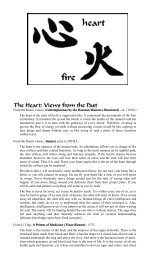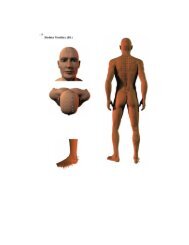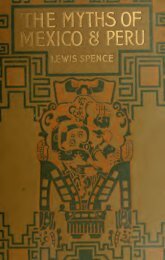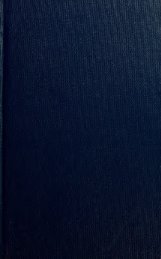Create successful ePaper yourself
Turn your PDF publications into a flip-book with our unique Google optimized e-Paper software.
<strong>Cause</strong>, principle and unity<br />
triangle, as it cannot be resolved into another figure, likewise cannot be<br />
composed into triangles whose three angles are greater or smaller, even if<br />
the triangles are diverse and varied, of diverse and varied types in terms of<br />
greater or lesser size, minimal or maximal. Therefore, if you posit an infinite<br />
triangle (I do not mean really and absolutely, since the infinite has no<br />
figure; I mean infinite hypothetically, insofar as its angle is useful for our<br />
demonstration), it will not have an angle greater than that of the smallest<br />
finite triangle, and likewise for that of any intermediate triangle and of<br />
another, maximum triangle.<br />
But leaving off the comparison between one shape and another, I mean<br />
between triangles, and considering angles, we see that they are all equal,<br />
whatever their size, as in this square (fig. 2). This square is divided diagonally<br />
into several triangles, and we see that not only are the angles of the<br />
fig. 2.<br />
three squares A, B and C equal, but also that all the acute angles resulting<br />
from the division made by the said diagonal, which doubles the series of<br />
triangles, are all equal. From this we can very clearly see, by a very marked<br />
analogy, how the one infinite substance can be whole in all things, although<br />
in some in a finite manner and in others in an infinite manner, in some in<br />
lesser measure and in others in greater measure.<br />
Add to this (to see further that, in this one, in this infinity, contraries<br />
coincide) that the acute and the obtuse angles are two contraries. But do<br />
you not see (fig. 3) that they are formed from a unique, undivided, identical<br />
principle, that is, from the inclination made by the line M, which joins<br />
perpendicularly the horizontal line BD at point C? Pivoting on point C,<br />
and by a simple inclination towards point D, that perpendicular line, that<br />
produces, first, two identical right angles and highlights, then, the difference<br />
between the acute and the obtuse angle as it approaches point D. When it<br />
98

















